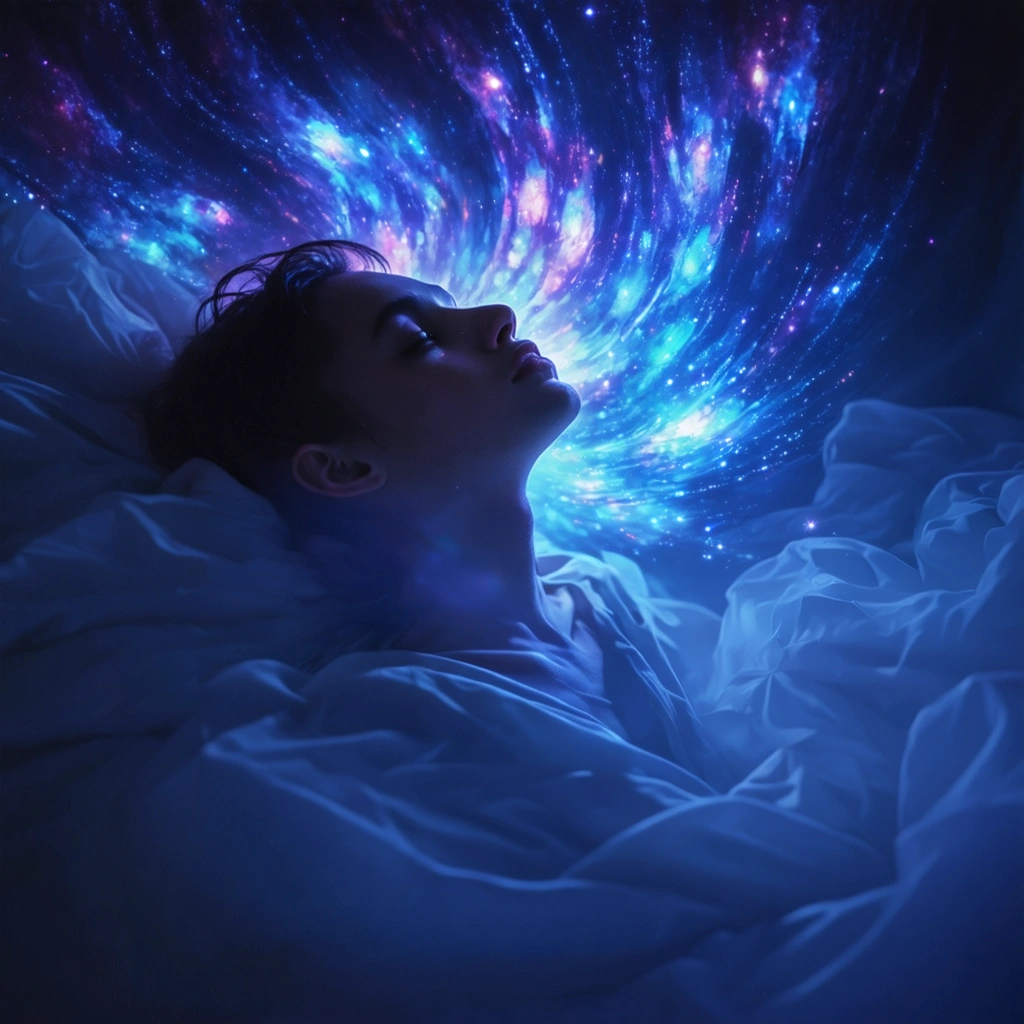
Introduction: Entering the Realm of Slumber and Spirit
Night after night, curious individuals journey into an enigmatic world where dreams and reality blur. Many encounter sleep paralysis, a phenomenon that grips the mind with astonishment and unease. Initially, these experiences instigated both fear and wonder. Gradually, however, researchers and spiritual enthusiasts began exploring these mysterious episodes. Consequently, each encounter evolved into an expedition into astral projection and lucid dreaming. Moreover, these altered states grew to symbolize a modern exploration of spirituality. In light of these developments, many now embrace the idea that our minds reach beyond simple sleep, and that slumber becomes a portal to multidimensional realms.
The Historical and Cultural Perspective
Historically, cultures worldwide have reported encounters with sleep paralysis, attributing them to supernatural forces. Ancient civilizations explained these occurrences using vivid mythologies often centered on demonic visions or spirits lurking near the bed. For instance, a medieval European legend described a “sleep demon” that hovered over sleepers, while eastern traditions revered the experience as a sign of spiritual awakening. Furthermore, many indigenous communities incorporated these incidents into their ritual practices. Notably, such narratives established the foundation for today’s exciting blend of science and spirituality. Additionally, historical records indicate that empathy toward these phenomena gradually turned fearful interpretations into exploratory quests.
The Science of Unconscious Realms
Scientists study sleep paralysis and lucid dreaming with fervor as they traverse neuroscience and psychology alike. Researchers maintain that sleep paralysis connects to rapid eye movement sleep. Consequently, during this phase, the body experiences temporary immobility even while the mind ventures into vivid perceptual landscapes. Subsequently, the brain enacts mechanisms that blur the boundaries between wakefulness and sleep. Equally, scholars debate whether astral projection remains purely imaginative or if it signifies an interdimensional experience. Moreover, advanced brain imaging techniques continue to reveal intriguing patterns during these episodes. At the same time, recent studies affirm that lucid dreaming holds therapeutic potential for stress and emotional regulation.
Astral Projection and Lucid Dream Narratives
Several personal accounts amplify our understanding of these experiences. Many describe sensations of floating above their bodies, moving through corridors of light, and traversing surreal environments. Notably, some individuals enumerate checking items on a mental “astral map,” feeling curious as they encounter astonishing realms. In contrast, others use lucid dreams to face personal challenges and gain insights. Importantly, each narrative reflects not only the struggle with sleep disorders but also moments of profound spiritual awakening. Among these are:
- Enhanced self-awareness
- Heightened sensory perceptions
- A renewed sense of purpose
- Unpredictable encounters with seemingly otherworldly entities
Furthermore, many narrators stress that the experience transforms their perception of reality and alters their approach to life.
The Interplay Between Neuroscience and Spirituality
Many researchers and spiritual teachers now collaborate to bridge scientific inquiry with mystical experiences. They often emphasize that empirical evidence can coexist with metaphysical interpretations. For example, neurologists observe brain patterns during sleep paralysis while mystics interpret the same phase as a gateway to spiritual dimensions. Therefore, both camps learn from one another. In brief, scientists focus on neural connections, whereas mystics treasure the transcendental insights that reinforce personal and cultural beliefs. Notably, a multidisciplinary approach remains crucial in unraveling these enigmas. Hence, collaborative studies continue to push the boundaries of our knowledge.
Personal Transformations Through Strange Realms
Many individuals voice transformation stories after encountering sleep paralysis and lucid dreams. Initially, the episodes may induce fear, yet those who persist encounter enlightenment and insight. Significantly, personal growth often emerges from overcoming initial terror. In one account, a woman described how her sleep paralysis evolved into a journey of self-forgiveness and strength as she navigated eerie visualizations. Also, a man claimed that lucid dreaming unlocked creative potential that succeeded both professionally and artistically. Thus, metamorphoses frequently manifest as shifts from darkness to luminous clarity. Each story contributes to the evolving conversation between science and the human spirit.
Integrating the Mystical with the Mundane
Moreover, daily routines gradually merge with extraordinary spiritual experiences. Individuals now incorporate practices such as meditation, mindfulness exercises, and dream journaling into their lives. In addition, many communities hold group sessions to discuss nocturnal journeys where all exchange insights regarding sleep paralysis and its implications on well-being. Such integrative approaches suggest that while the phenomenon may initially seem bizarre, it becomes an enriching part of modern spiritual praxis. Additionally, these practices help people focus on inner balance and a broader understanding of human consciousness. Consequently, more lives transform as science and spirituality intersect meaningfully.
A Numerical Overview of Modern Spiritual Trends
The growing interest in alternative sleep experiences calls for a quantitative look. Researchers have conducted surveys that reveal:
- Approximately 8% of the population experiences sleep paralysis at least once.
- Nearly 25% of lucid dreamers report using their dreams creatively.
- More than 30% of participants believe that astral projection has positively influenced their life’s direction.
Furthermore, numerical data underscores how these phenomena continue to inspire both scientific inquiry and spiritual exploration. Future surveys aim to detail trends and best practices.
Modern Interpretations: A Blend of Film and Fact
Popular culture plays a significant role in shaping perceptions of dream states. Films like Inception and Waking Life dramatically depict altered realities, thereby inspiring audiences to seek hidden meanings within their sleep. Moreover, documentaries by educators such as Jade Shaw draw public interest by illustrating early intersections of science, spirituality, and narrative storytelling. Thus, mainstream portrayals reinforce curiosity and widen the collective quest for understanding astral planes. Also, the cinematic representation continues to drive further investigation in both academic and spiritual circles. As a result, art remains a conduit to the hidden realms of consciousness.
Practical Approaches to Navigating Sleep Paralysis
Practitioners advise several techniques for those encountering sleep paralysis. Initially, individuals should focus on maintaining a regular sleep schedule and establishing a relaxing bedtime ritual. Additionally, one may adopt the following helpful strategies:
- Practice deep breathing to calm the body and mind.
- Engage in meditation before sleeping.
- Keep a dream journal to track recurring themes.
- Consult professionals for guidance if episodes become overwhelming.
Subsequently, these methods empower individuals to transform unsettling experiences into opportunities for introspection and healing. In turn, a proactive approach fosters a stronger connection to one’s inner self and a greater understanding of subconscious messages.
The Role of Community and Shared Experiences
Many communities now organize gatherings and online forums where members share their nocturnal adventures. In such spaces, participants exchange advice and empathize with one another’s journeys into otherworldly states. Furthermore, these interactions promote a supportive environment where collective intelligence facilitates personal insight. Additionally, group discussions often provide both practical help and emotional reassurance. Hence, the collective narrative expands, and each storyteller contributes valuable perspectives to the mosaic of sleep-related phenomena. This shared experience ultimately nurtures a robust network that empowers voices around the globe.
Examining the Spiritual Narrative
Moreover, spiritual leaders articulate that sleep paralysis offers chances to examine the soul’s journey. In several sessions, spiritual advisors describe the experience as a “peek into another world,” where individuals connect with archetypal symbols. As a result, many embrace these nights as moments of internal growth. Additionally, cultural ceremonies now acknowledge sleep states as sacred rituals rather than mere medical anomalies. Furthermore, these spiritual narratives evoke timeless themes found throughout human history. Consequently, the mystical aspects of sleep amplify an individual’s quest for deeper meaning and understanding toward life’s greater mysteries.
Challenging the Dichotomy: Science Versus the Spiritual
Historically, scholars faced difficulties reconciling scientific evidence with spiritual accounts of sleep phenomena. However, modern thinkers assert that these realms form a continuum, not a strict dichotomy. Accordingly, many researchers now adopt holistic approaches to study both neurological patterns and personal narratives. In tandem, interdisciplinary methods foster a more comprehensive perspective toward sleep-related experiences. Equally, this synthesis provides breakthroughs that advance both fields concurrently. Thus, the once stark division blurs, and both analytical and mystical viewpoints flourish together in an era of expanding awareness.
The Future: Exploring New Dimensions
Looking ahead, future research promises to uncover even deeper layers of the unconscious mind. Pioneering scientists plan to enhance imaging technology while spiritual practitioners prepare to integrate ancient wisdom into modern methodologies. In addition, collaborative ventures between technology experts and mystics are on the rise. These initiatives prioritize the development of virtual reality tools designed to simulate lucid dreams and astral projections safely. Therefore, the future holds dynamic methods to explore sleep paralysis and associated phenomena. Ultimately, the journey into these realms remains intertwined with both scientific curiosity and a timeless spiritual quest.






